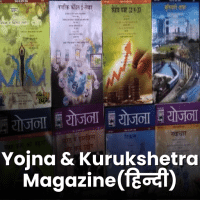Current Affairs Exam > Current Affairs Questions > He was a 15th-century Indian mystic, social r...
Start Learning for Free
He was a 15th-century Indian mystic, social reformer and poet. He was one of the most influential saints. He was best known for his two-line couplets. His teachings openly ridiculed all forms of external worship of both Brahmanical Hinduism and Islam. According to him, every life has a relationship with two spiritual principles (Jivatma and Paramatma). His view about the moksha is that it is the process of uniting these two divine principles. He was
- a)Chaitanya Mahaprabhu
- b)Namadeva
- c)Tukaram
- d)Kabir Das
Correct answer is option 'D'. Can you explain this answer?
Most Upvoted Answer
He was a 15th-century Indian mystic, social reformer and poet. He was ...
In News: Recently,The Prime Minister has paid tribute to Sant Kabir Das ji on his Jayanti on 24 June
- He was a 15th-century Indian mystic, social reformer, poet and saint who had a significant role among the people in India. ○ He was one of the most influential saints.
- He was brought up in a family of Muslim julahas orweavers settled in or near the city of Benares (Varanasi).
- He was best known for his two-line couplets, known as 'Kabir Ke Dohe'
- He is a widely revered poet whose works had a tremendous influence on the Bhakti movement.
- Kabir's legacy is still going on through a sect known as Panth of Kabir, a religious community that considers him as the founder.
- His teachings openly ridiculed all forms of external worship of both Brahmanical Hinduism and Islam,the pre-eminence of the priestly classes and the caste system.

|
Explore Courses for Current Affairs exam
|

|
He was a 15th-century Indian mystic, social reformer and poet. He was one of the most influential saints. He was best known for his two-line couplets. His teachings openly ridiculed all forms of external worship of both Brahmanical Hinduism and Islam. According to him, every life has a relationship with two spiritual principles (Jivatma and Paramatma). His view about the moksha is that it is the process of uniting these two divine principles. He wasa)Chaitanya Mahaprabhub)Namadevac)Tukaramd)Kabir DasCorrect answer is option 'D'. Can you explain this answer?
Question Description
He was a 15th-century Indian mystic, social reformer and poet. He was one of the most influential saints. He was best known for his two-line couplets. His teachings openly ridiculed all forms of external worship of both Brahmanical Hinduism and Islam. According to him, every life has a relationship with two spiritual principles (Jivatma and Paramatma). His view about the moksha is that it is the process of uniting these two divine principles. He wasa)Chaitanya Mahaprabhub)Namadevac)Tukaramd)Kabir DasCorrect answer is option 'D'. Can you explain this answer? for Current Affairs 2025 is part of Current Affairs preparation. The Question and answers have been prepared according to the Current Affairs exam syllabus. Information about He was a 15th-century Indian mystic, social reformer and poet. He was one of the most influential saints. He was best known for his two-line couplets. His teachings openly ridiculed all forms of external worship of both Brahmanical Hinduism and Islam. According to him, every life has a relationship with two spiritual principles (Jivatma and Paramatma). His view about the moksha is that it is the process of uniting these two divine principles. He wasa)Chaitanya Mahaprabhub)Namadevac)Tukaramd)Kabir DasCorrect answer is option 'D'. Can you explain this answer? covers all topics & solutions for Current Affairs 2025 Exam. Find important definitions, questions, meanings, examples, exercises and tests below for He was a 15th-century Indian mystic, social reformer and poet. He was one of the most influential saints. He was best known for his two-line couplets. His teachings openly ridiculed all forms of external worship of both Brahmanical Hinduism and Islam. According to him, every life has a relationship with two spiritual principles (Jivatma and Paramatma). His view about the moksha is that it is the process of uniting these two divine principles. He wasa)Chaitanya Mahaprabhub)Namadevac)Tukaramd)Kabir DasCorrect answer is option 'D'. Can you explain this answer?.
He was a 15th-century Indian mystic, social reformer and poet. He was one of the most influential saints. He was best known for his two-line couplets. His teachings openly ridiculed all forms of external worship of both Brahmanical Hinduism and Islam. According to him, every life has a relationship with two spiritual principles (Jivatma and Paramatma). His view about the moksha is that it is the process of uniting these two divine principles. He wasa)Chaitanya Mahaprabhub)Namadevac)Tukaramd)Kabir DasCorrect answer is option 'D'. Can you explain this answer? for Current Affairs 2025 is part of Current Affairs preparation. The Question and answers have been prepared according to the Current Affairs exam syllabus. Information about He was a 15th-century Indian mystic, social reformer and poet. He was one of the most influential saints. He was best known for his two-line couplets. His teachings openly ridiculed all forms of external worship of both Brahmanical Hinduism and Islam. According to him, every life has a relationship with two spiritual principles (Jivatma and Paramatma). His view about the moksha is that it is the process of uniting these two divine principles. He wasa)Chaitanya Mahaprabhub)Namadevac)Tukaramd)Kabir DasCorrect answer is option 'D'. Can you explain this answer? covers all topics & solutions for Current Affairs 2025 Exam. Find important definitions, questions, meanings, examples, exercises and tests below for He was a 15th-century Indian mystic, social reformer and poet. He was one of the most influential saints. He was best known for his two-line couplets. His teachings openly ridiculed all forms of external worship of both Brahmanical Hinduism and Islam. According to him, every life has a relationship with two spiritual principles (Jivatma and Paramatma). His view about the moksha is that it is the process of uniting these two divine principles. He wasa)Chaitanya Mahaprabhub)Namadevac)Tukaramd)Kabir DasCorrect answer is option 'D'. Can you explain this answer?.
Solutions for He was a 15th-century Indian mystic, social reformer and poet. He was one of the most influential saints. He was best known for his two-line couplets. His teachings openly ridiculed all forms of external worship of both Brahmanical Hinduism and Islam. According to him, every life has a relationship with two spiritual principles (Jivatma and Paramatma). His view about the moksha is that it is the process of uniting these two divine principles. He wasa)Chaitanya Mahaprabhub)Namadevac)Tukaramd)Kabir DasCorrect answer is option 'D'. Can you explain this answer? in English & in Hindi are available as part of our courses for Current Affairs.
Download more important topics, notes, lectures and mock test series for Current Affairs Exam by signing up for free.
Here you can find the meaning of He was a 15th-century Indian mystic, social reformer and poet. He was one of the most influential saints. He was best known for his two-line couplets. His teachings openly ridiculed all forms of external worship of both Brahmanical Hinduism and Islam. According to him, every life has a relationship with two spiritual principles (Jivatma and Paramatma). His view about the moksha is that it is the process of uniting these two divine principles. He wasa)Chaitanya Mahaprabhub)Namadevac)Tukaramd)Kabir DasCorrect answer is option 'D'. Can you explain this answer? defined & explained in the simplest way possible. Besides giving the explanation of
He was a 15th-century Indian mystic, social reformer and poet. He was one of the most influential saints. He was best known for his two-line couplets. His teachings openly ridiculed all forms of external worship of both Brahmanical Hinduism and Islam. According to him, every life has a relationship with two spiritual principles (Jivatma and Paramatma). His view about the moksha is that it is the process of uniting these two divine principles. He wasa)Chaitanya Mahaprabhub)Namadevac)Tukaramd)Kabir DasCorrect answer is option 'D'. Can you explain this answer?, a detailed solution for He was a 15th-century Indian mystic, social reformer and poet. He was one of the most influential saints. He was best known for his two-line couplets. His teachings openly ridiculed all forms of external worship of both Brahmanical Hinduism and Islam. According to him, every life has a relationship with two spiritual principles (Jivatma and Paramatma). His view about the moksha is that it is the process of uniting these two divine principles. He wasa)Chaitanya Mahaprabhub)Namadevac)Tukaramd)Kabir DasCorrect answer is option 'D'. Can you explain this answer? has been provided alongside types of He was a 15th-century Indian mystic, social reformer and poet. He was one of the most influential saints. He was best known for his two-line couplets. His teachings openly ridiculed all forms of external worship of both Brahmanical Hinduism and Islam. According to him, every life has a relationship with two spiritual principles (Jivatma and Paramatma). His view about the moksha is that it is the process of uniting these two divine principles. He wasa)Chaitanya Mahaprabhub)Namadevac)Tukaramd)Kabir DasCorrect answer is option 'D'. Can you explain this answer? theory, EduRev gives you an
ample number of questions to practice He was a 15th-century Indian mystic, social reformer and poet. He was one of the most influential saints. He was best known for his two-line couplets. His teachings openly ridiculed all forms of external worship of both Brahmanical Hinduism and Islam. According to him, every life has a relationship with two spiritual principles (Jivatma and Paramatma). His view about the moksha is that it is the process of uniting these two divine principles. He wasa)Chaitanya Mahaprabhub)Namadevac)Tukaramd)Kabir DasCorrect answer is option 'D'. Can you explain this answer? tests, examples and also practice Current Affairs tests.

|
Explore Courses for Current Affairs exam
|

|
Signup for Free!
Signup to see your scores go up within 7 days! Learn & Practice with 1000+ FREE Notes, Videos & Tests.
























